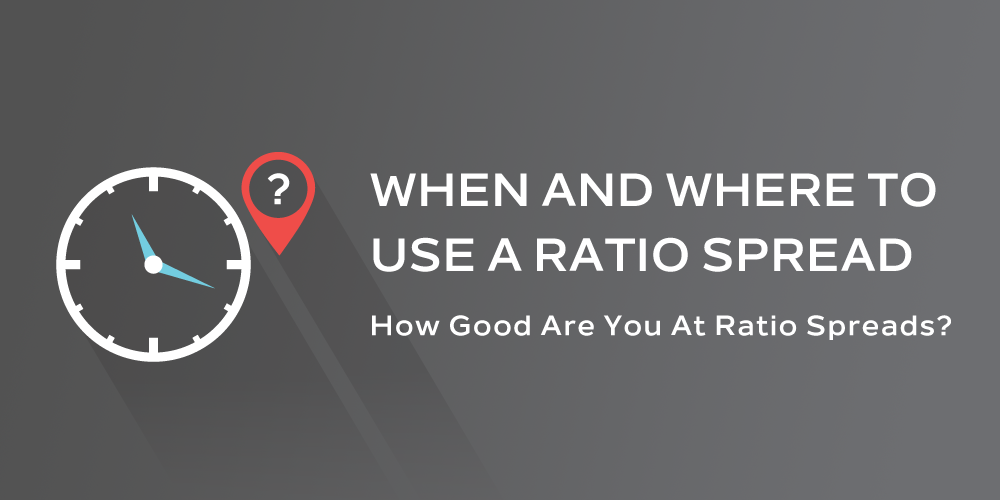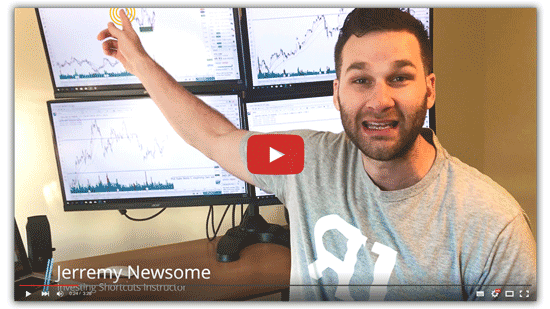
The ratio spread is a neutral to slightly bullish strategy that traders use when the market outlook is flat to slightly higher. A ratio spread may also be utilized if a trader believes implied volatility levels may decline. A ratio spread involves the purchase of options on a particular stock or instrument and the sale of more options on the same stock or instrument of the same expiration date but different strike price.
A call ration spread is: Buy 1 ATM call option
Sell 2 OTM call options
A put ratio spread is: Buy 1 ATM put option
Sell 2 OTM put options
While the two examples listed above are basic 1:2 ratio spreads, such spreads may be implemented using other ratios such as 1:3 and 2:4.
For example, Trader Joe has been watching shares of stock XYZ which is currently trading at $29 per share. Joe believes that XYZ is likely close to a top and that any further upside in the shares will be limited. In fact, Joe does not believe that XYZ will trade above $35 per share anytime soon. Joe decides to initiate a ratio spread based on his neutral to slightly bullish outlook. Joe does so by purchasing a 60 day $30 call option and selling two of the 60 day $35 call options. Joe pays $3.00 for the $30 call option and sells each $35 call option for $1.50. Joe has therefore, initiated this position for even money.
Here are the possible outcomes:
- The shares rise to $35 per share at expiration: This is the ideal scenario. Joe would realize the full intrinsic value of the long call $30/$35 call spread which is five points. The second $35 call sold would simply expire worthless.
- The shares rise and are between $30 and $35 at expiration: In this case, Joe also stands to make a profit. In fact, Joe will make a point-for-point profit on the stock for every tick above $30 up to $35. For example, if the shares rise to $32 at expiration, Joe’s $30/$35 call spread would be worth $2 while the second $35 call would simply expire worthless.
- The shares rise above $35: If the shares rise above the $35 mark, the profit on Joe’s long $30/$35 call spread will be reduced from its maximum value of $5.00 point-for-point up to $40 per share. For example, if the stock is at $37 at expiration, Joe’s $30/$35 call spread will have reached its full intrinsic value of $5.00 but the second short $35 call will have $2.00 of intrinsic value. Joe’s profit would, therefore, be reduced to $3.00.
- The shares rise above the break-even of $40 per share: At $40 per share, Joe’s long call spread has reached its full intrinsic value of $5.00 but Joe is now losing $5.00 as the second short $35 call has also reached $5.00 in intrinsic value. This represents the break-even point. As the stock rises above $40 per share, Joe will lose point-for-point with the stock moving higher. Joe’s risk on this position is unlimited.
- The shares simply go sideways or fall: If the stock price is at or below the long call strike price of $30 at expiration, all options will simply expire worthless. Since Joe initiated the position for even money, there is no harm/no foul.
As with any type of strategy, there are some key points to keep in mind when using a ratio spread. These should all be considered before attempting to implement such a strategy:
- Limited profit potential: The maximum profit on a ratio spread is the difference between strikes minus any debit paid or in addition to any credit collected.
- Unlimited risk: Remember-with a ratio spread you are naked short one or more calls or puts. These naked options carry unlimited market exposure.
- May be affected by changes in implied volatility: A decline in IV may positively affect your position while an increase in IV may work against your position.
- Ratios may be put on for debits, credits or even money: While putting on a ratio spread for a credit is ideal, these positions may be initiated at even money or for a debit.
- Ratios may be used with calls or puts: The mechanics of a ratio spread work the same whether it is constructed using calls or puts.
While a ratio spread put on for even money or a net credit may seem very enticing, it comes with significant risks. It should only be utilized if you are willing to assume the risks that come along with it and if you have experience with such positions. In the proper hands, ratios can potentially provide a cost effective way to try to profit from a neutral to slightly bullish market outlook.
Looking for a proven, repeatable way to make easy, higher-potential trades?
In this limited-time free training, you will learn 3 super simple tricks used to generate consistent profits from day trading weekly options…











